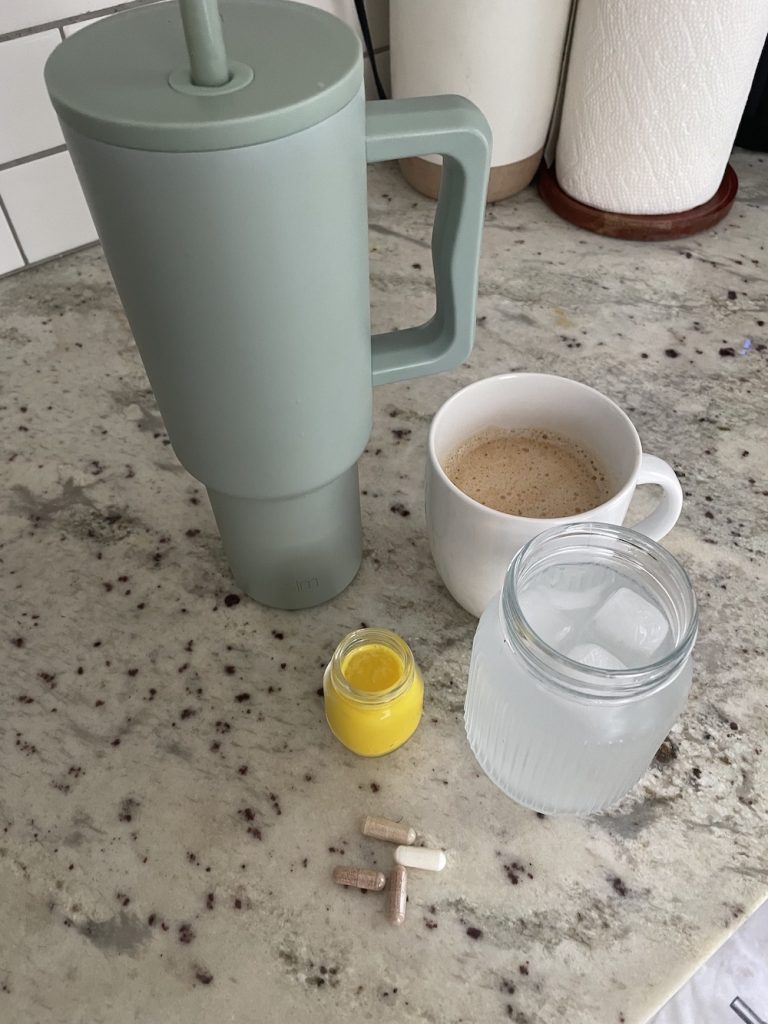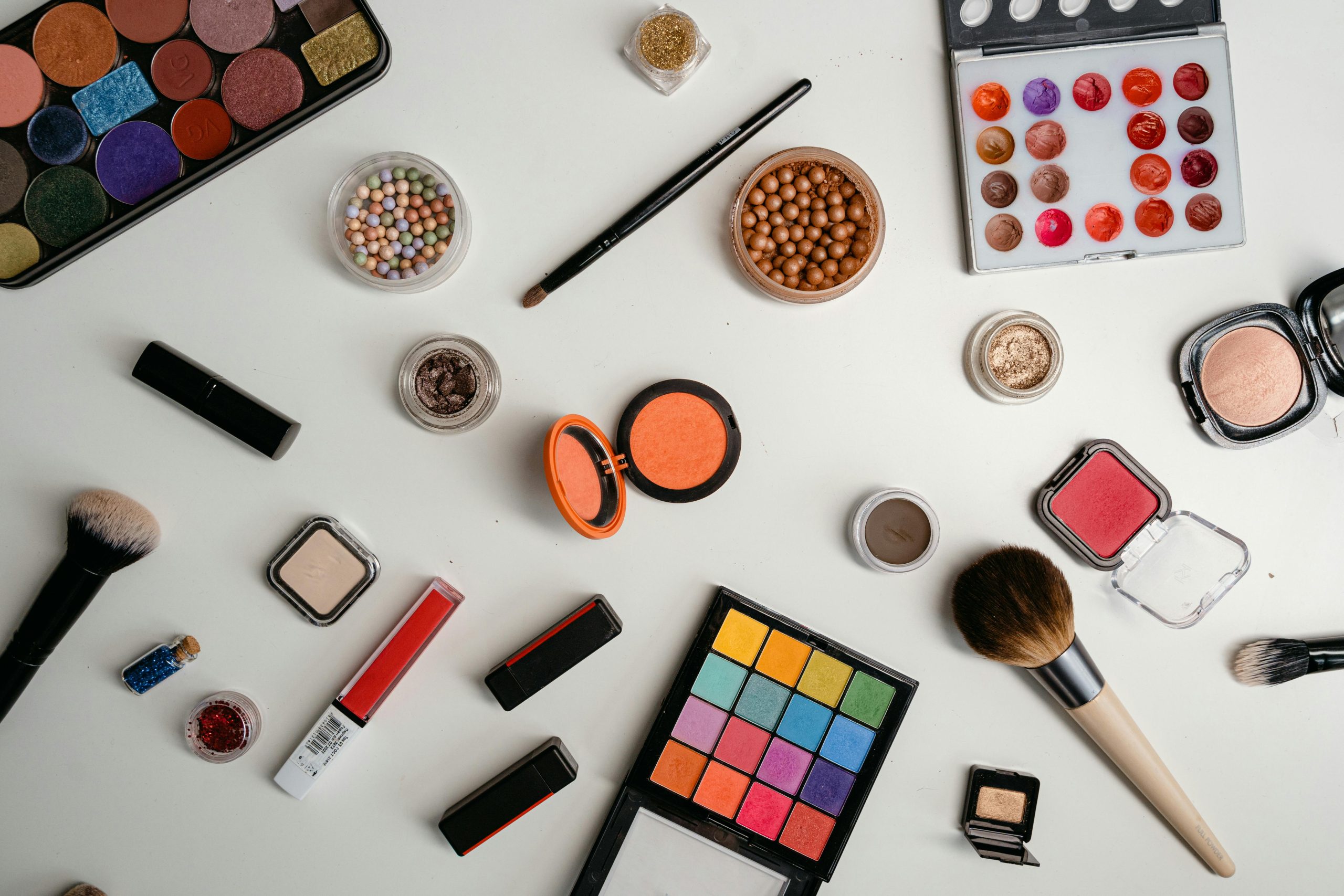I Transformed My Health After Listening to This One Podcast Episode
I’m going to let you in on a dirty little secret: My alter ego might be a biohacking gym bro. Real ones will tell you I’ve been known to listen to two-plus hour podcasts on all things fitness, wellness, and optimization and… take notes *you may now cringe*. But as much as I love geeking out over the science behind muscle protein synthesis or cold plunging, the truth is that most of the research has been done without women in mind, meaning without taking into account our bodies’ unique needs. So, when an episode of The Huberman Lab Podcast with Dr. Stacy Sims dropped with “female-specific” advice, I was shaking with excitement.
Dr. Stacy Sims is an exercise physiologist, nutrition scientist, and world-renowned expert in female-specific nutrition and training for healthy performance and longevity. If you’ve heard the phrase “women are not small men” (which refers to the fact that the female body has unique needs), she’s the one to thank. In this episode, Dr. Stacy Sims debunks so much of what we’ve been told about how to exercise and outlines the blueprint for training and fueling in a way that will optimize your health and set you up for a long healthy happy life. But the episode is over two hours long—I listened so you don’t have to. I’m outlining 12 key takeaways from The Huberman Lab podcast episode I think every woman needs to hear. No matter your age or health goals, there’s some incredible insight for you here.
1. We Should All Be Resistance Training
It’s probably not news to you that weight lifting is not just for gym bros; the girls should be lifting weights in some capacity to improve strength, metabolic health, hormonal health, and more. But despite how far we’ve come in terms of normalizing lifting for women (and getting rid of myths that it will make you “bulky”), there’s still far to go. So catch me screaming it from the rooftops: Strength training is fundamental for bone density, balance, a healthy metabolism, cognitive function, and so much more. Dr. Sims also provided a full breakdown of the ideal workout routine for women.
The Ideal Workout Routine:
While these are the guidelines she recommends for each age group, she also notes that women aged 20-40 can focus more on finding ways to move that they enjoy and will stay consistent with. Developing a strong baseline of strength will help as you begin to hit perimenopause, but ultimately, we want to choose things we enjoy doing.
Women in their 20s:
- Learn how to move well (squat, deadlift, chest press, lunge, etc.); this will set you up for the rest of your life
- Aim for three to four strength training sessions per week around 45-60 minutes
- You can train for failure, and train for strength and hypertrophy
- Sparknotes on hypertrophy: Work around the 8-12 reps aiming to hit failure on the last rep
- Add in one to two sessions of sprint intervals or HIIT
- Make things fun! Find the exercise you like to do, and try to incorporate this stuff where you can.
Women in their 30s
- Three to four strength training sessions focused on compound movements and lifting heavy
- Compound movements are exercises that work multiple muscle groups and joints at the same time (squats, deadlifts, lunges, overhead presses, bent-over rows)
- Work in six-week blocks focused on progressing in strength to have a strong base foundation going into your 40s
- One to two sessions of HIIT or sprint intervals
Women in their 40s and on
- Minimum of three resistance training sessions focusing on compound movements
- One to two sessions of HIIT or sprint intervals
- Jump training to help keep bone density and prevent osteoporosis
2. Don’t Be Afraid of “High-Intensity” Exercise
In this cortisol-obsessed world, high-intensity workouts have come under fire as the culprit for inflammation and stress. Dr. Sims shared that some of this can actually be mitigated by proper nutrition (which I’ll jump into shortly), but the other takeaway is that most of what we’ve defined as high intensity… isn’t actually. Most of your Barry’s, Orange Theory, and SoulCycle are actually moderate-intensity workouts. These are the types of exercise that will drain the tank but don’t actually reach a high enough intensity for the post-exercise hormone response that brings cortisol back down.
So, what is high intensity exercise? We’re talking about short bursts of 80-100 percent effort. This could be a full-out sprint, battle ropes, an assault bike, or some sort of interval training. All out effort, recovery for two to three minutes, and repeat three to four times. Why? True high-intensity work creates strong external stress that teaches your body to adapt. Essentially teaching your body how to overcome an inflammatory response. As we age and lose estrogen, we lose a huge anti-inflammatory agent. This type of training can make up for that. Not only do these adaptations help you process glucose and carbohydrates more efficiently, but they also contribute to brain health and cognitive function as well. So, you can tax the system in short bursts (no more spending an hour on the treadmill), and then commit to full recovery before you do it again.
3. Intermittent Fasting is Not It (For Women)
According to Dr. Sims, most of the research on the benefits of fasting or training fasted focuses on men. Women’s bodies don’t react the same way. Whether you’ve experimented with the practice or simply find you can’t stomach food in the morning, it may be time to restructure your routine. Turns out it all comes back to everyone’s favorite buzzword: Cortisol. Cortisol spikes in the morning, and giving the body some fuel before we take on another stressor, whether it’s a workout or simply rushing into your day, helps bring that spike down.
If you find yourself feeling like you’re running on adrenaline all day, it may be due to a lack of fuel first thing in the morning. The good news is it doesn’t take much; a pre-breakfast snack to get blood sugar up can make all the difference. Try out some of these high-protein breakfast ideas that will start you off on the right foot.
4. Yes, You Need to Fuel Before and After Your Training
For women especially, taking on a workout with no fuel (AKA food) makes it difficult—if not impossible—to reach the level of intensity we want to see results and release the hormones that drop our cortisol after the workout. Dr. Sims recommended at least 15 grams of protein before a workout if you are going to do any kind of resistance training and can throw some carbs if you’re also engaging in cardio. Afterward, get in 35 grams of protein within an hour to prohibit the breakdown of lean mass and help kickstart that recovery and muscle-building process.
If you’re thinking, “I thought we disproved that post-workout window,” I regret to inform you that we have on our hands another case where women are different than men (men can wait up to three hours before the breakdown of lean mass begins). Getting that fuel in quickly means we don’t start to break down the lean muscle mass we are trying to build.
5. For Nutrition Outside of Workouts, Follow Three Basic Principles
Beyond nutrition before and after workouts, Dr. Sims keeps it fairly simple with three basic principles to follow that provide the optimal nutrition for most women:
- Get in about 1 gram of protein per pound of body weight a day.
- Yes, we really do need that many grams of protein to gain and maintain muscle mass, as well as support other functions in the body, such as the metabolism and immune system. Intimidated or overwhelmed? Try these dietician-approved high-protein snacks or check out these hacks to incorporate more protein (that don’t include eating more meat).
- Eat carbohydrates from all colors of the rainbow
- Yes to all fruits, vegetables, and grains because they’re high in fiber and micronutrients like vitamins, minerals, and antioxidants. If you are eating a starchy carbohydrate such as white bread or pasta, Dr. Sims recommended pairing it with protein for a great post-workout meal.
- Nourish with healthy fats
- We love a plant-based fat like avocados, olive oil, nuts, and seeds, but Dr. Sims doesn’t shy away from dairy either. Grab some butter or full-fat greek yogurt to balance out your meals.

6. For Extra Credit, Take Specific Supplements
While diet is always most important when it comes to proper nourishment, Dr. Sims does recommend a few specific and intentional supplements for women. And the surprising #1 choice on her list? Creatine (her answers to your potential FAQ: Yes, it’s safe for women; no, it will not make you gain weight). Creatine not only helps your performance and recovery but also has been shown to improve your cognitive performance. The second most important supplement Dr. Sims recommended for all women is Vitamin D3 to maintain iron stores. She also gives a shoutout to adaptogens like ashwagandha, schisandra, lion’s mane, and rishi, and mentioned it’s important to have a good protein powder to help hit your daily goal and fuel before and after workouts.
7. Opt for Hot over Cold
If you’ve fallen down the cold plunge rabbit hole recently, this one’s for you. As awesome as it may feel to take a dip in frigid temperatures, Dr. Sims said it is not ideal for women (if you do love the cold plunge or cold shower, try to keep that temperature no lower than 50 degrees Fahrenheit). However, there are significant benefits to heat exposure (i.e., saunaing) for women. If you’re experiencing hot flashes in menopause and perimenopause, regular heat exposure can actually help mitigate those. Additionally, saunaing for up to 30 minutes after you lift can help enhance performance and recovery.
8. Keep Your Eyes on Your Own Cycle
Cycle syncing has been revolutionary for many women in the way they approach their fitness routine. Dr. Sims confirms that there are different phases of the cycle where you may need more fuel, may feel more fatigued, or may be more likely to hit a PR. Her takeaway is this: All cycles are different. Track your own and find out where those phases are for you and how your body feels in each phase. Additionally, depending on your birth control method, your hormones may not follow the natural cycle, so following a typical cycle syncing protocol may not have any benefit for you.
9. Eat With Your Coffee
Dr. Sims is not the health expert who’s going to tell you you need to ditch caffeine altogether or go decaf-only. If you need to justify your daily dose of caffeine (me), Dr. Sims has got your back. But she did mention it’s important to only drink caffeine along with food. Especially if you’re having a cup of coffee before a workout and you get dizzy or nauseous, try adding in a little snack or hold off on the coffee until you can eat.
11. Do Not Reduce Your Well-Being to Aesthetics
A powerful part of the conversation was when Dr. Sims shared her opinion on the dominant messaging when it comes to women’s fitness and nutrition. It’s unsurprising that most of what we learn about wellness is about the way our bodies look (fitness programs claiming they’ll help you look more toned, WIEIAD videos that start with a mirror selfie, supplements that promise weight loss). She offers a refreshing perspective and recommends women stop basing their wellness routines around aesthetics. Instead, focus on molecular changes that will optimize your life, improve brain health, and give you the ability to live a long, active, and independent life.
12. Listen to Your Body First and Foremost
At the very end of the episode, Andrew Huberman poses the question: “If you had a magic wand and you could get all the women on earth to make a change or changes, how they think about their hormone cycle exercise, healthspan, lifespan, what would it be?” Dr. Sims goes on to say that she would have every woman understand their intrinsic self. There is so much external noise about the right way to move, eat, and live and a lack of information about how to understand our bodies’ cycles and aging process. She hopes that each woman can understand what their body is experiencing and have the tools to help it thrive in that age and stage of life. TL;DR: Listening to your body is the most important change you could possibly make for your health.

Abigail Moseman, Social Media Assistant
As the Social Media Assistant, Abi works with the Social Media Editors to ideate and create content, and build community across all of The Everygirl’s social channels. Abi uses her passion for fitness to contribute ideas and content as a fitness writer for The Everygirl.
The post I Transformed My Health After Listening to This One Podcast Episode appeared first on The Everygirl.







